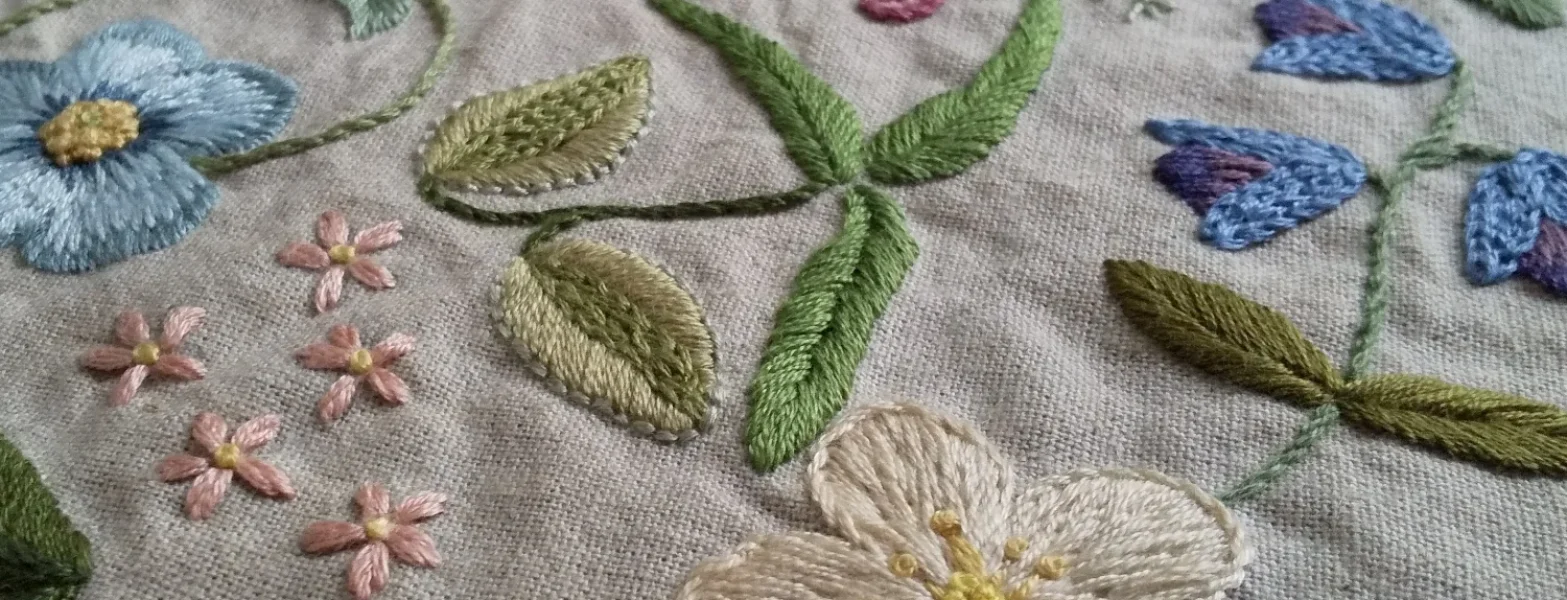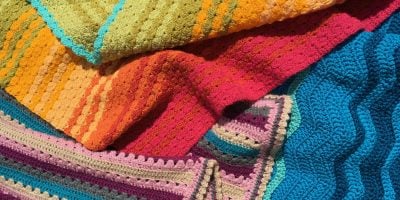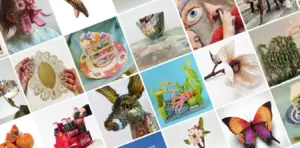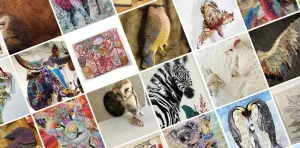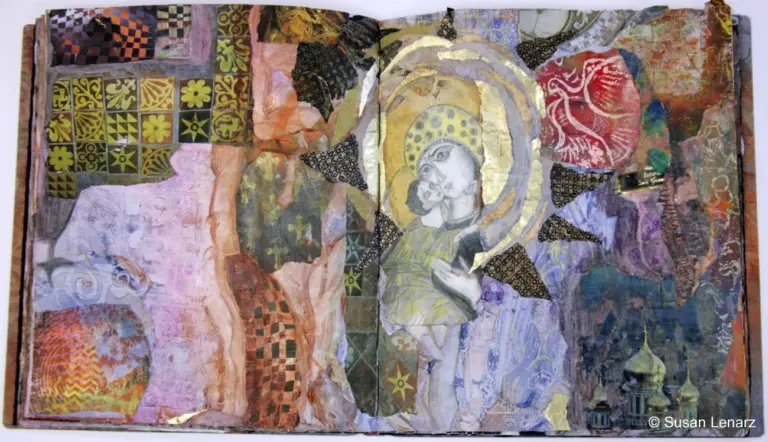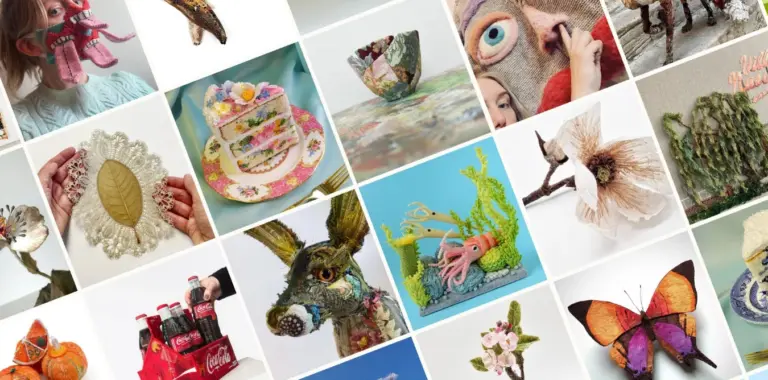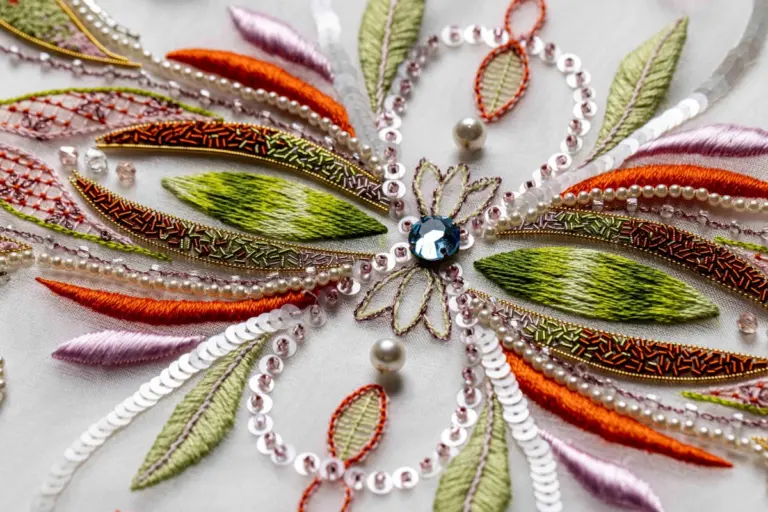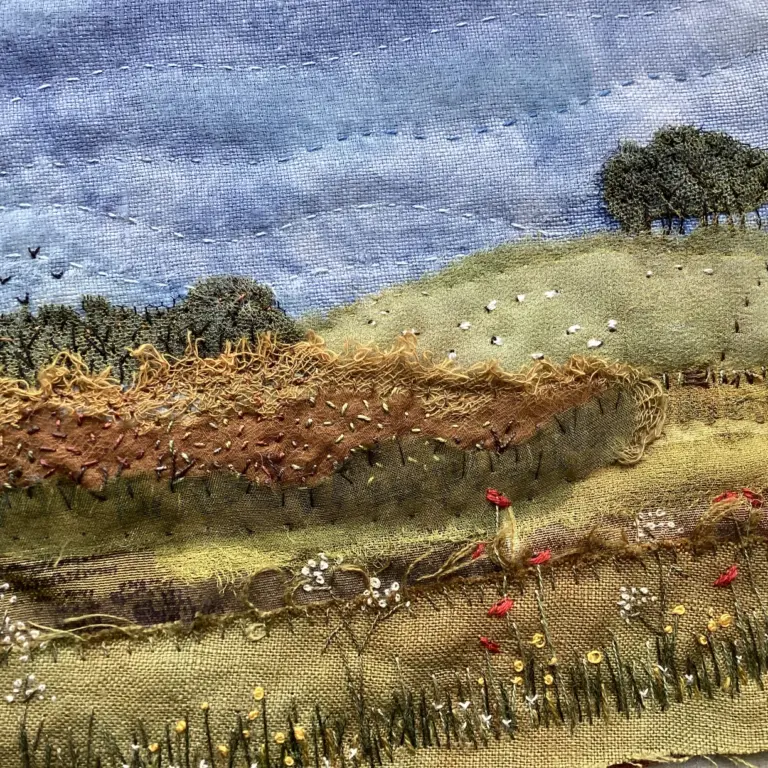Noriko Livingstone is an acclaimed embroidery artist whose intricate and nature-inspired designs have captivated the hearts of many art enthusiasts. Her journey into the world of embroidery is as unique as her art itself, stemming from a deep-rooted appreciation for nature and a rich background in fashion, art, and floristry.
Noriko’s passion for plants and the natural world, fostered by her mother and grandmother’s love for gardening and sewing, is evident in every stitch she makes. Her connection to nature not only serves as her primary source of inspiration but also permeates her work with a sense of organic beauty and meticulous detail.
We caught up with Noriko Livingstone to delve into her artistic practice. She shares insights into her creative process and sources of inspiration. She discusses the parallels between floral arrangements and embroidery design, her admiration for the Arts and Crafts Movement, and the significance of high-quality materials in her work, thanks to the sponsorship from DMC threads.
Whether you’re an aspiring artist, a seasoned stitcher, or simply someone who appreciates the beauty of handcrafted art, Noriko’s story is sure to inspire and resonate. Join us as we uncover the intricate world of Noriko Livingstone and discover her embroideries in bloom!
Noriko Livingstone
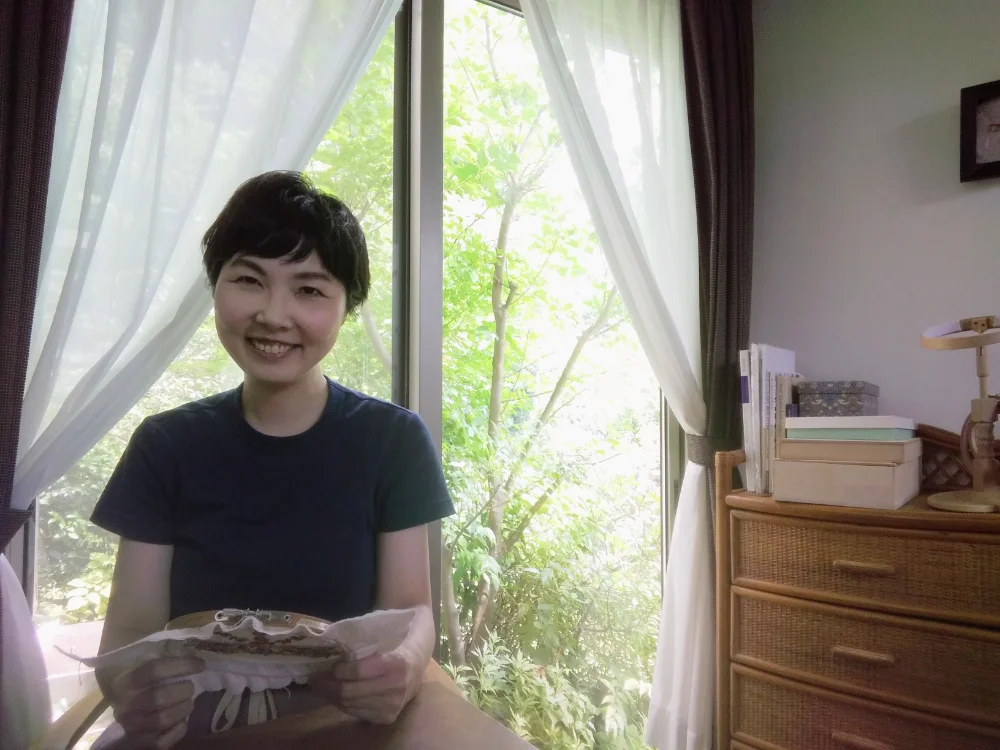
“There are some similarities with making flower arrangements and designing embroidery. I like designing flower arrangements, thinking how each different texture goes well naturally together using some space and combining colours, which are important skills to create my embroidery design too.”
Tell us about your background? How did your stitch journey begin?
Both my grandmother and mother were often sewing and they also liked gardening. I went to the mountains every summer with my mother and saw alpine plants, so I’ve had a natural interest in sewing, nature and plants since I was little.
I studied Fashion & Art at University in Japan. My graduation thesis for University was about the Arts and Crafts Movement/ William Morris and I created a dress with embroidery and beads and focused on two key designs: The Owl by John Henry Dearle and Willow Bough by William Morris. My dress was chosen by the University and displayed at a museum.
After graduation, I went to the UK to study Floristry. I worked for some florists and also for a Nature-plants museum after. I liked what I was doing, but I always felt like this is not exactly what I was looking for. That’s when I took up embroidery which I would do in my lunch breaks as a hobby. I didn’t really expect that I would have enough talent to be an artist, but now I feel this is my place and all my study and my career were connected to this.
I have two daughters and my eldest started stitching naturally since she was 4 years old and she is really good at it. Often, I design and stitch, while holding a baby and I’m extremely busy at the moment! But I really enjoy doing my work!
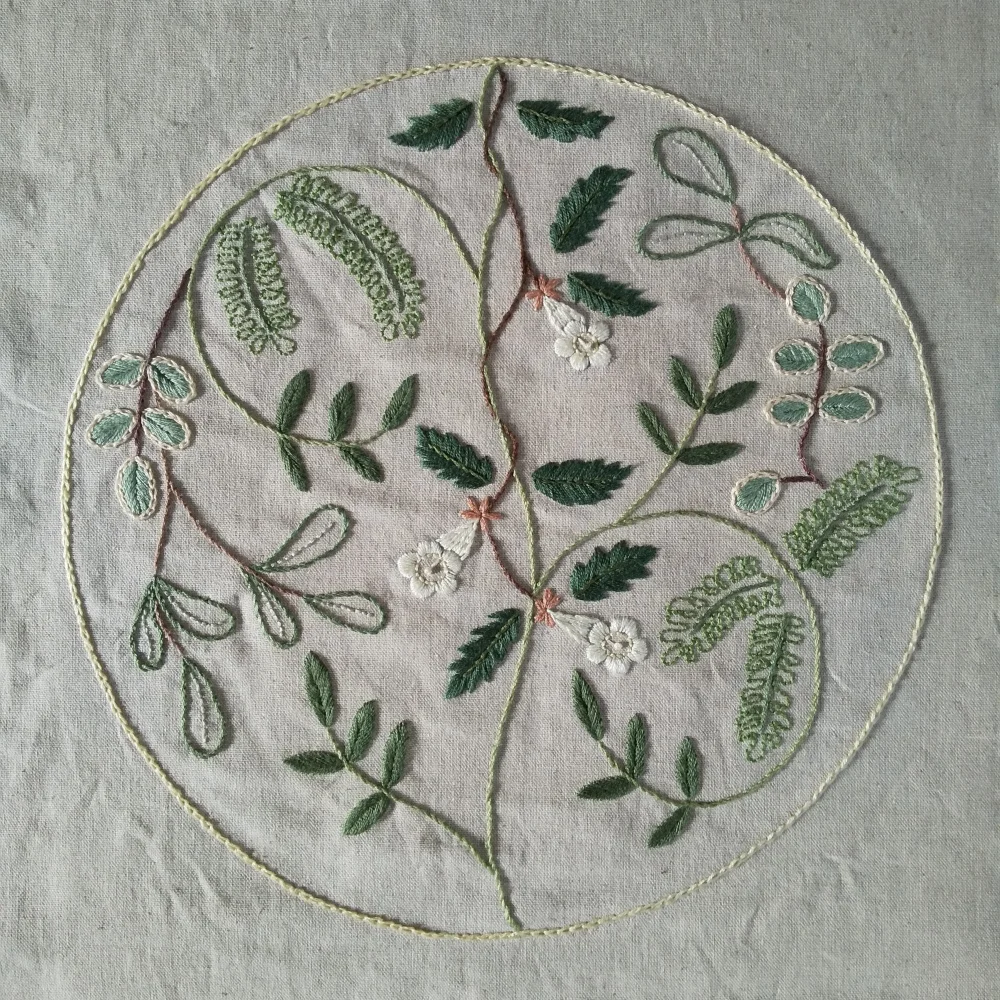
Where do you usually look for inspiration when starting a new piece?
My design motifs are inspired by nature. I look for inspiration in gardens, nature behind our house or mountains as I love trekking.
I remember the animator of Ghibli, Hayao Miyazaki, was taught by his boss that he should see real things more than looking at photos when he was young. When you see nature by your sight, you can see the individual details, feel the sunshine and the wind. Being present is far more inspirational than viewing an image.
I also get inspiration from other art forms like paintings, pottery and textiles. And I often visit museums. One of my projects- Hummingbirds which was featured in Inspirations magazine issue 121, featured a colour combination which was inspired by the pottery made by an Austrian-born, British studio potter – Lucie Rie. To date this has been one of my most successful design kits. They sold out in half a month and the publisher is planning on producing further stock.
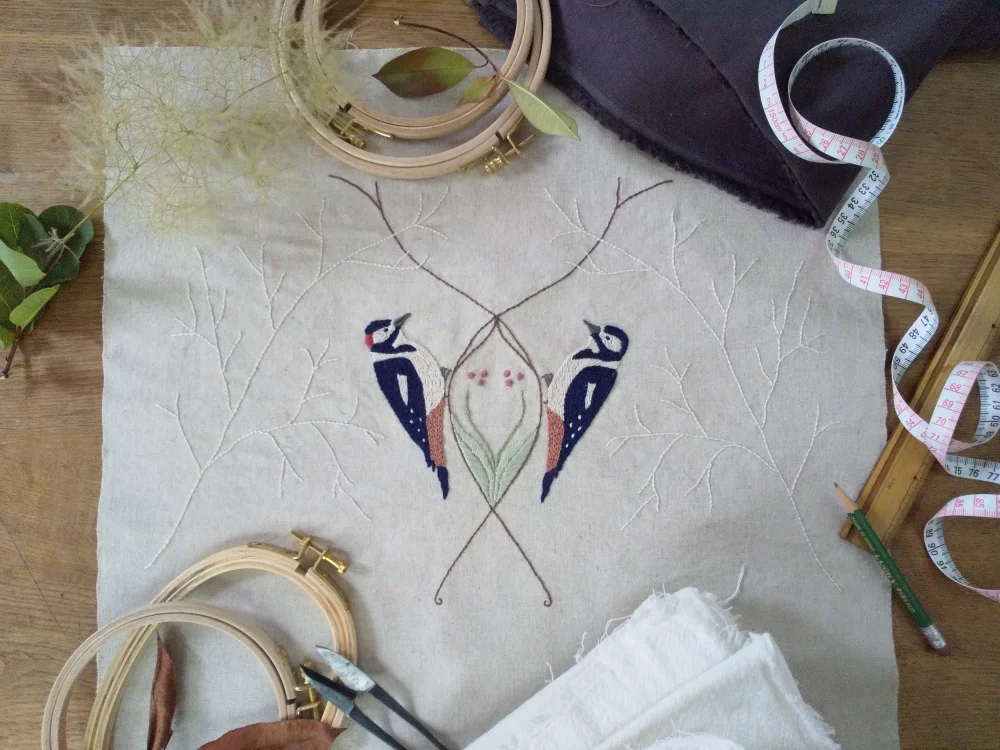
How does nature and plants and creating flower arrangements feed into your embroidery?
There are some similarities with making flower arrangements and designing embroidery. I like designing flower arrangements, thinking how each different texture goes well naturally together using some space and combining colours, which are important skills to create my embroidery design too. I have many plants I would like to try to design for my stitch projects and I am looking forward to publishing them!
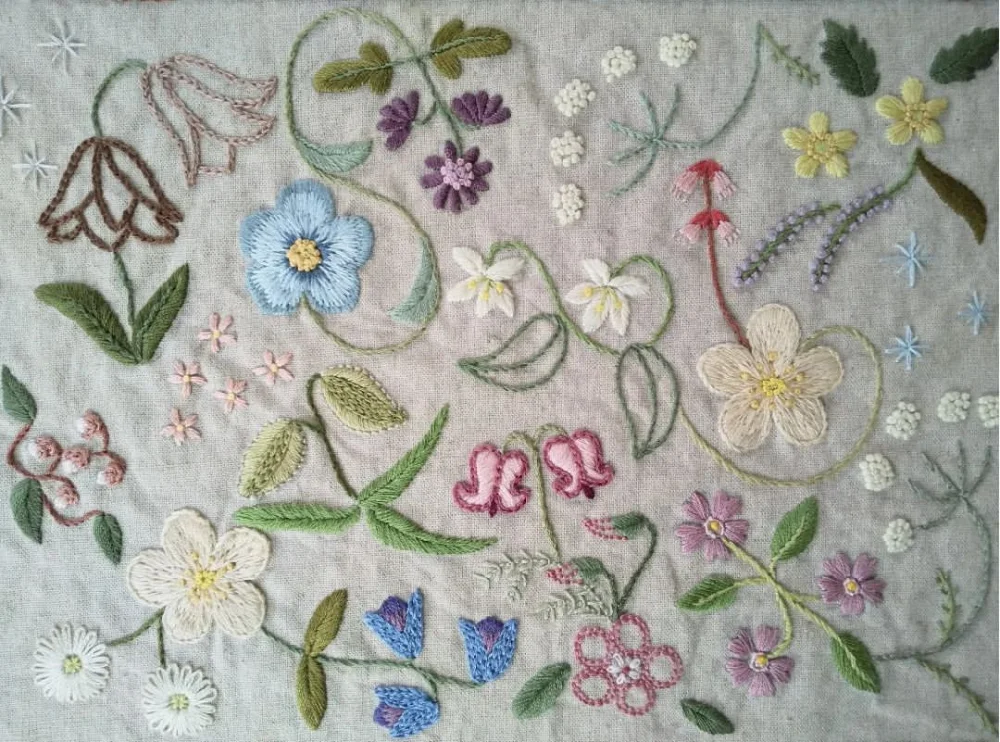
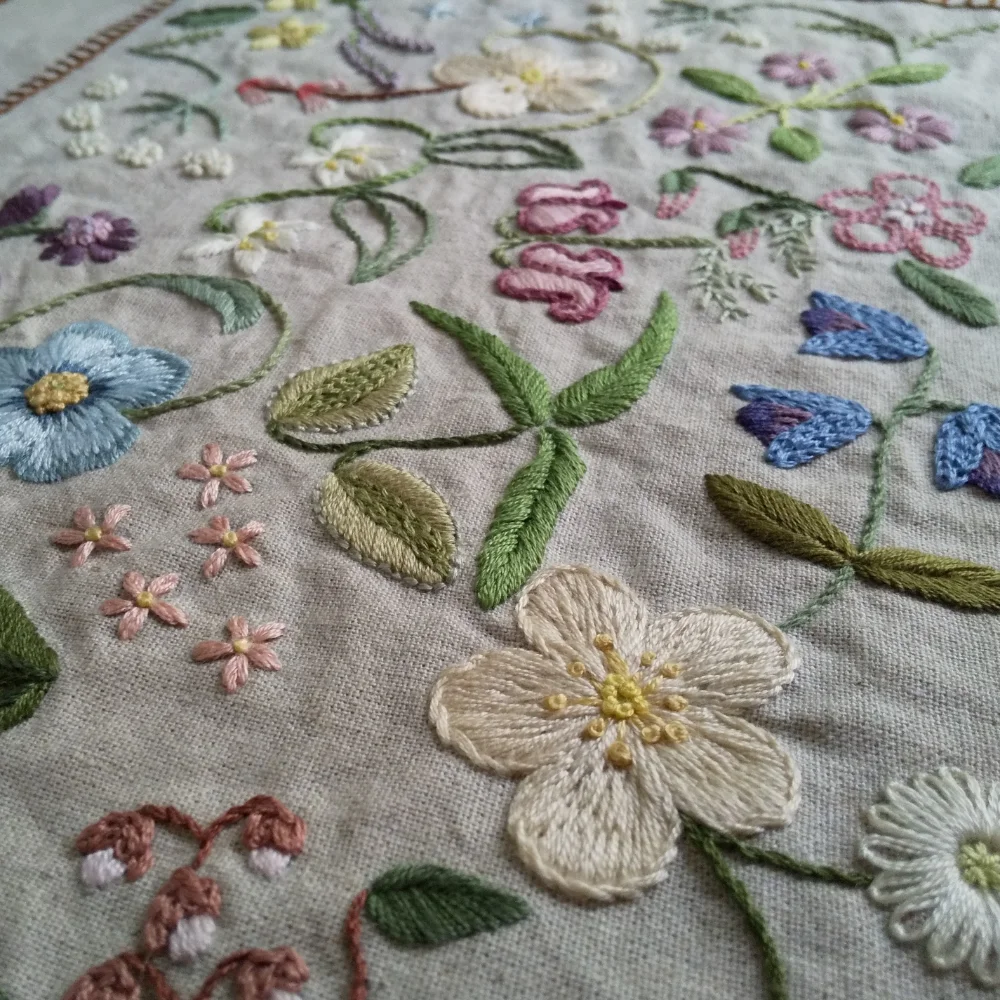
What is it about the Arts & Crafts Movement you are drawn to?
In the late 19th century in Europe, the Industrial Revolution led to mass production, resulting in the spread of cheap, inferior goods. This movement was to counter them and attempt to send good quality goods to everyone not just to rich people by creating high-quality, practical items made by artisans and craftsmen that would beautify life through medieval art. It had a great influence on art nouveau later. William Morris was the pioneer of the movement and I like his philosophy as well as the elegant and sophisticated designs too.
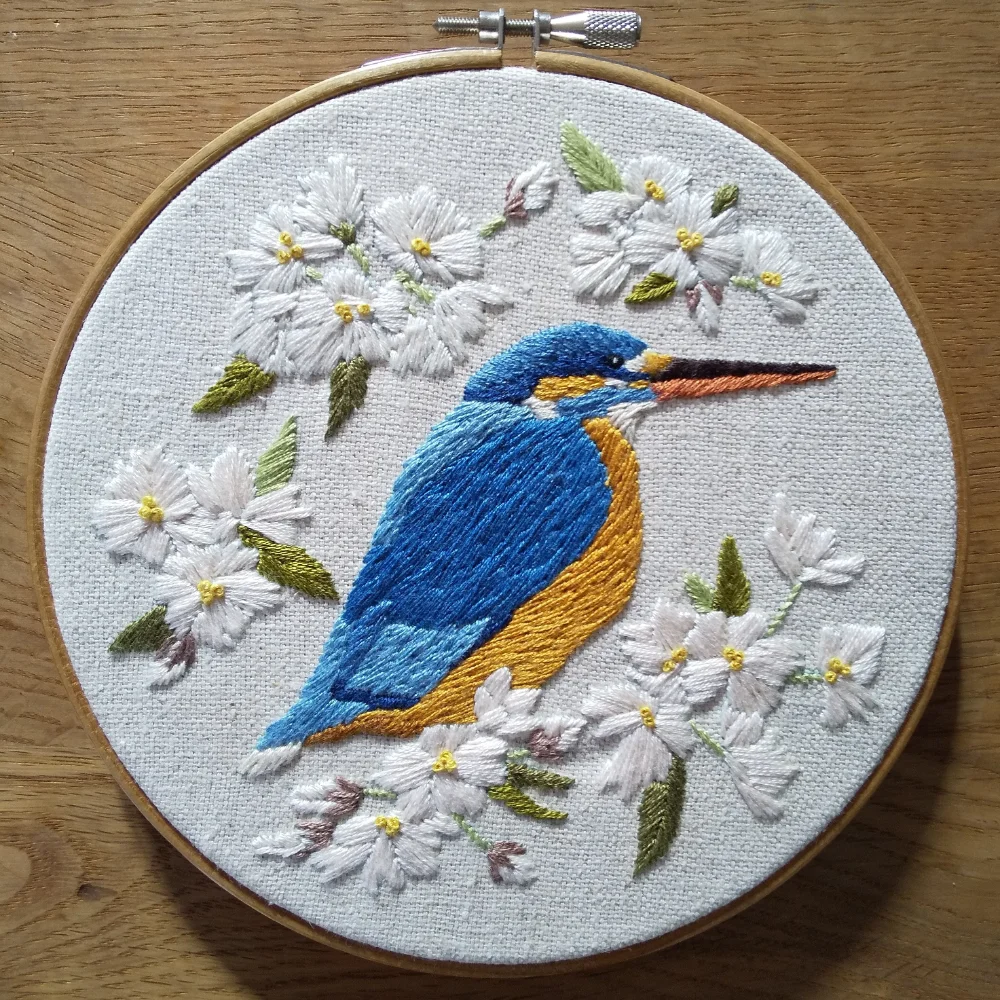
DMC threads sponsor you ‒ can you tell us how that works?
I am grateful that I have this big support! Before I got their support, every time I went to a craft shop and was in front of the thread shelves, I was so excited and I felt like I could be here all day long! Now I have the selection at my workplace and it’s really convenient to compare the colours and I can choose the best colours for my projects. DMC has a long tradition and reputation of high-quality and their colour variation has more than 500 beautiful colours! When I produce projects, getting some support from DMC is really important as I don’t have to hesitate or give up going ahead with the projects. I can make something I can be really happy with. I am very lucky to have this opportunity and appreciate it!
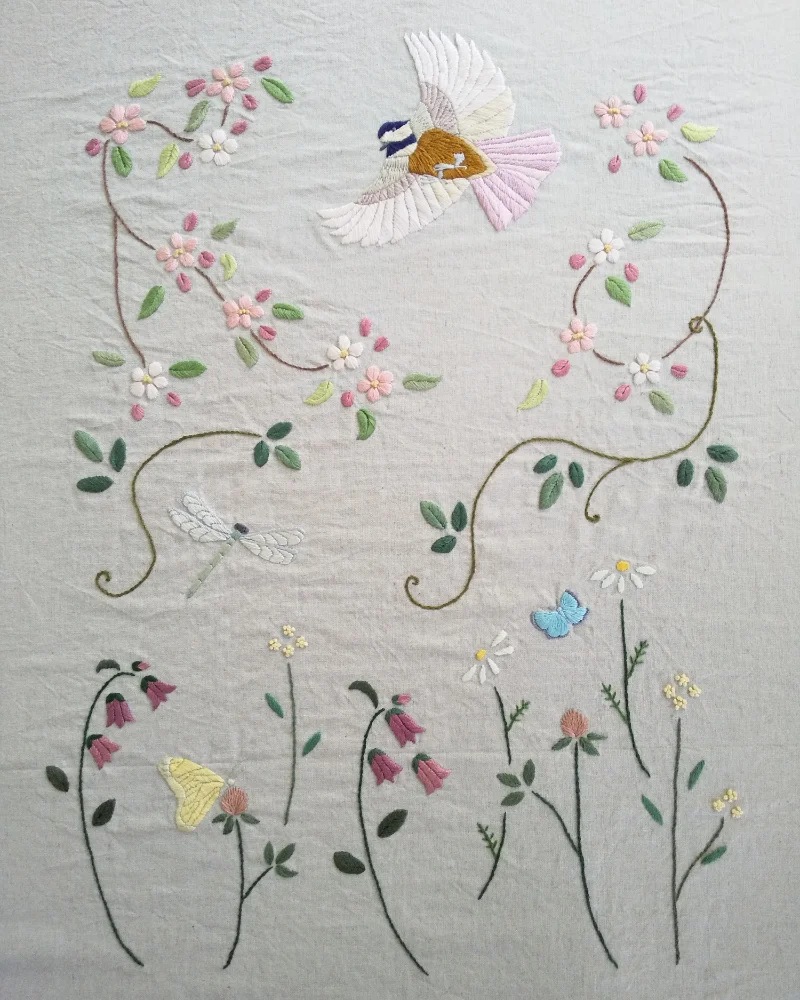
What do you have coming up?
One of my projects will be published by a publisher next spring and I’m in discussion with a few companies that are interested in producing my designs. I would like to publish an embroidery with plants book in the near future. Designing for postage stamps and my projects displayed at a museum are also my big goals. Also I am very interested in working with interior design studios, working with artisans and creating unique spaces together.
I design embroidery kits for people that are easy to understand. My aim is to help people enjoy stitching and help them to produce something they can be proud of which can be display or used in daily life after creating. I appreciate stitchers who enjoy my designs. I would like to say ‘thank you’ to the people who support my artwork!
For more information about Noriko Livingstone you can visit her website or follow her on Instagram.
Key Takeaways
Here’s what we’ve learned by Noriko Livingstone:
Nature is Inspiration: Noriko Livingstone draws her design motifs primarily from nature, finding inspiration in gardens, the mountains, and the natural scenery around her home. This connection to the natural world is a fundamental aspect of her creative process, ensuring that her work is infused with organic beauty and authenticity.
Artistic Journey: Noriko’s path to becoming an embroidery artist is rooted in her early love for sewing and nature, influenced by her mother and grandmother. Her academic background in Fashion & Art and her professional experience in floristry and working at a nature-plant museum all contributed to her eventual passion for embroidery.
Influence of the Arts and Crafts Movement: Deeply inspired by the Arts and Crafts Movement, particularly the works of William Morris, Noriko appreciates the movement’s philosophy of producing high-quality, artisanal goods. This influence is reflected in her commitment to creating elegant and sophisticated designs that are both beautiful and practical.
Support from DMC Threads: With sponsorship from DMC threads, Noriko has access to a wide range of high-quality threads, enabling her to select the perfect colors for her projects without constraints. This support is crucial for her to realize her creative visions and produce work that she is truly proud of.
Future Aspirations: Noriko has ambitious plans for the future, including publishing an embroidery book focused on plants, designing for postage stamps, and collaborating with interior design studios. Her goal is to create unique and inspiring spaces through her embroidery, and to continue sharing her passion for the craft by designing accessible and enjoyable kits for stitchers.

